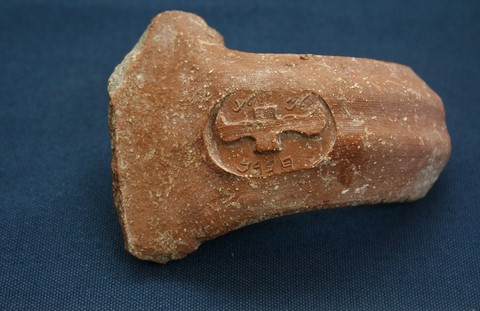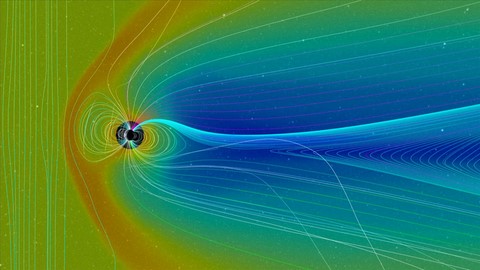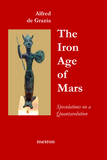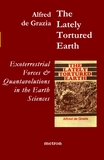Huge spike in geomagnetic field recorded in 8th century B.C. ceramic pottery
More than 2,500 years ago in the ancient Near East, the Earth's geomagnetic field was going gangbusters. During the late eighth century B.C., a new study finds, the magnetic field that surrounds the planet was temporarily 2.5 times stronger than it is today.
Researchers know about these fluctuations thanks to the bureaucracy of Judah, an ancient kingdom situated around what is now Jerusalem. Pottery jugs from between the eighth and second centuries B.C. bear administrative stamps that changed with the political situation. Unbeknown to the people firing these jugs, the act of heating locked information about the Earth's geomagnetic field into minerals present in the clay. Because the stamps provide precise information about when the pots were fired, the study allows a detailed look at geomagnetic changes over 600 years.
"This was the system of the king in Jerusalem to be able to collect tax efficiently," study author Erez Ben-Yosef, an archaeologist at Tel Aviv University, said of the stamps. "We are actually benefiting from a good bureaucratic system, the ancient IRS."

A stamped pottery handle from the Israel settlement called Ramat Rahel. The magnetic minerals used in the pottery were sealed in during heating and are revealing the history of Earth's magnetic field.
Credit: Courtesy of Oded Lipschits
Magnetic Earth
The Earth is surrounded by a magnetic field that arises from the motion of iron in the liquid outer core. Direct observation of the field has been possible for only about 180 years, Ben-Yosef told Live Science. In that time, the field has weakened by about 10 percent, he said. Some researchers think the field might be in the process of flipping, so that magnetic north becomes magnetic south and vice versa.
The new study reveals much faster changes in intensity. There was a spike in intensity during the late eighth century B.C., culminating in a rapid decline after about 732 B.C., Ben-Yosef and his colleagues reported today (Feb. 13, 2017) in the journal Proceedings of the National Academy of the Sciences. In a mere 31 years beginning in the year 732 B.C., there was a 27 percent decrease in the strength of the magnetic field, the researchers found. From the sixth century B.C. to the second century B.C., the field was generally stable, with a slight gradual decline.
"Our research shows that the field is very fluctuating," Ben-Yosef said. "It fluctuates quite rapidly, so there is nothing to worry about," as far as the current decline, he said. (This doesn't mean that the magnetic field isn't going to flip in the near future; the new study looked at only strength of the field, not directionality. The findings do suggest that there's no reason to worry that a 10 percent decline in the field strength over more than a century is abnormal, Ben-Yosef said.)
At least in the Levant, that is. All of the pottery in the study came from this region, which encompasses what is now Syria, Jordan, Israel, Palestine, Lebanon and nearby areas. That means researchers can't be sure whether the same fluctuations were happening elsewhere. Because the scientists also don't know for sure the precise locations within the Levant where the pottery was fired, they can't say anything about the direction of the geomagnetic field at the time, only its strength.
Multidisciplinary mysteries

The clays in ceramic pots contain ferromagnetic minerals, or minerals containing iron. When the clays are heated, the electrons in these minerals align according to the Earth's magnetic field — imagine a series of iron filings lining up in arcs around a bar magnet. Once cooled, the magnetic patterns are locked in for good. The same process occurs when lava cools, so researchers can also detect changes in the magnetic field by studying volcanic rocks.
Understanding the ancient magnetic field has implications for many fields of research, Ben-Yosef said.
Archaeologists would like to develop a new system so they could look at the magnetic properties of heated materials and date them according to what the magnetic field was doing at the time. Earth scientists want to better understand the deep structures in the core that create the magnetic field. Atmospheric scientists want to understand the interactions of the magnetic field with cosmic radiation. Biologists are interested in cosmic radiation, too: Because the magnetic field protects the planet from damaging cosmic rays, Earth owes its flourishing life to the existence of the geomagnetic field.
"This is related to various different phenomena, from biology, Earth sciences, geophysics, atmospheric sciences and archaeology," Ben-Yosef said.
The researchers are now trying to expand their study of this time period to see if the fluctuations they observed were a regional phenomenon, or more widespread.
The article in the Proceedings of NAS
This study provides substantial data on variations in geomagnetic field intensity during the eighth to second centuries BCE Levant, thus significantly improving the existing record for this region. In addition, the study provides further evidence of extremely strong field in the late eighth century BCE (“geomagnetic spike”), and of rapid rates of change (>20% over three decades).
Abstract
Earth’s magnetic field, one of the most enigmatic physical phenomena of the planet, is constantly changing on various time scales, from decades to millennia and longer. The reconstruction of geomagnetic field behavior in periods predating direct observations with modern instrumentation is based on geological and archaeological materials and has the twin challenges of (i) the accuracy of ancient paleomagnetic estimates and (ii) the dating of the archaeological material. Here we address the latter by using a set of storage jar handles (fired clay) stamped by royal seals as part of the ancient administrative system in Judah (Jerusalem and its vicinity). The typology of the stamp impressions, which corresponds to changes in the political entities ruling this area, provides excellent age constraints for the firing event of these artifacts. Together with rigorous paleomagnetic experimental procedures, this study yielded an unparalleled record of the geomagnetic field intensity during the eighth to second centuries BCE. The new record constitutes a substantial advance in our knowledge of past geomagnetic field variations in the southern Levant. Although it demonstrates a relatively stable and gradually declining field during the sixth to second centuries BCE, the new record provides further support for a short interval of extreme high values during the late eighth century BCE. The rate of change during this “geomagnetic spike” [defined as virtual axial dipole moment > 160 ZAm2 (1021 Am2)] is further constrained by the new data, which indicate an extremely rapid weakening of the field (losing ∼27% of its strength over ca. 30 y).
Readings: Alfred de Grazia: The Iron Age of Mars:the book

"My position has been and remains that the Dark Ages hardly existed, although they were even more dreadful than conceived. For they marked a holospheric change in the world, so much change in every sphere – astrosphere, geosphere, biosphere, historisphere, etc – that they altogether amounted to a quantavolution, which is defined as an immense event of wide scope, great intensity and stunning suddenness."


